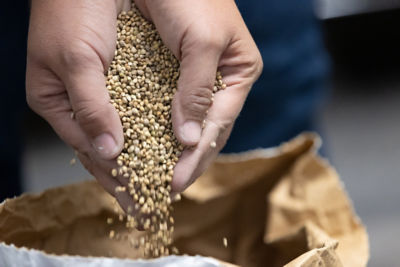Causal Agent
Phytophthora megasperma
Distribution
Worldwide
Symptoms
All cruciferous crops and many cruciferous weeds are affected by this disease. Plants first develop symptoms as temperatures fall and soil moisture increases. Leaf margins discolor red to purple beginning at the leaf tips and progressing to the stem, resulting in leaf dieback. Stem lesions appear gray when compared to healthy tissue. Infected plants generally wilt and often die.


Conditions for Development
This pathogen overwinters as oospores inside root tissue of diseased plants. Oospores give rise to zoospores, which are motile and infect roots of susceptible plants. Wet, poorly drained soils and temperatures between 13-25°C (55-77°F) generally favor this disease.
Control
Cultivate to prevent compaction of soils and help promote good soil drainage. Avoid planting into a field with a history of Phytophthora root rot and implement three-year crop rotations to non-susceptible crops. Apply chemical soil treatments to help manage this disease.



